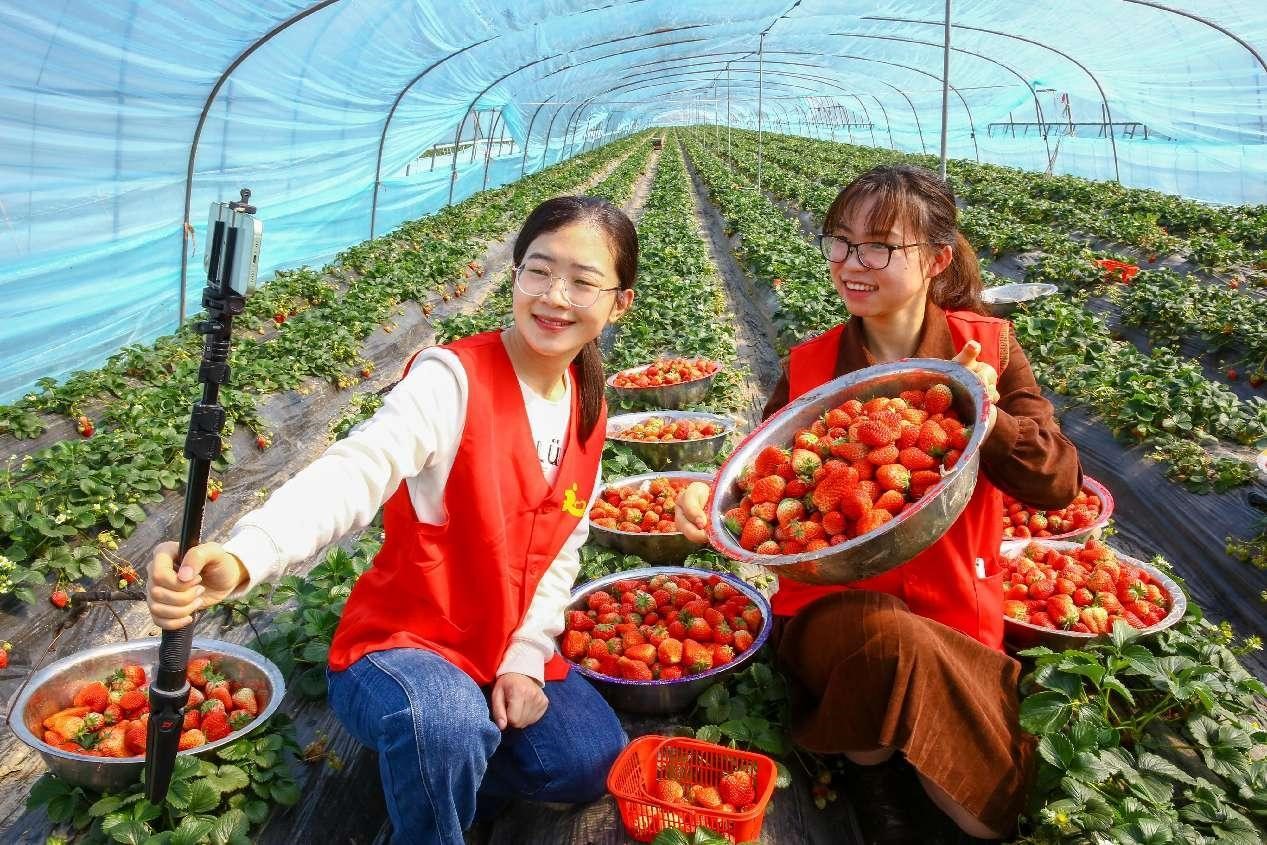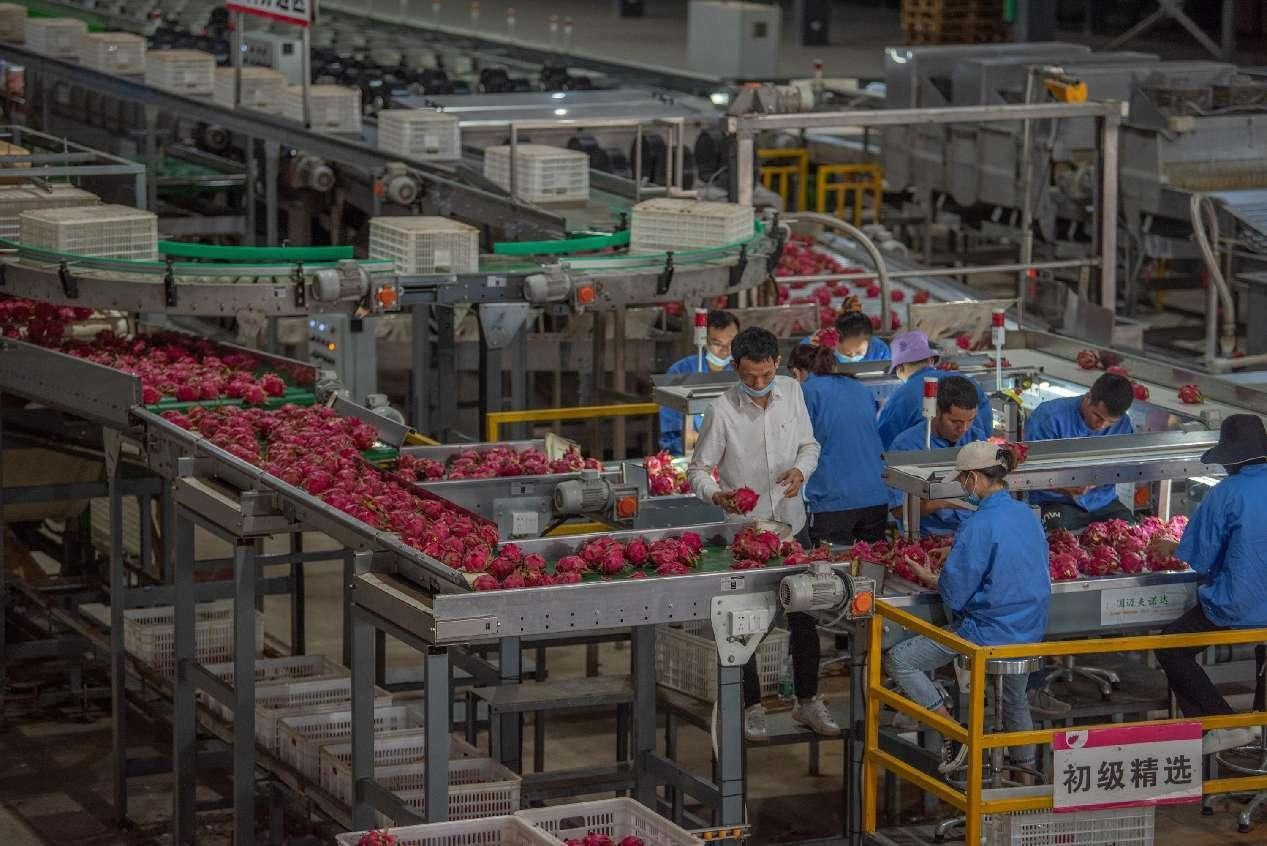




- BRNN
- BRI News
- BRNN News
- Database
Official Documents Polices and Regulations
Inter-government Documents International Cooperation BRI Countries
Business Guide Economic Data BRI Data
Trade
Investment Projects Latest projects
Cases - Content Pool
By relying on agricultural and rural resources, multiple regions in China have promoted industrial development according to local conditions in recent years, laying a solid foundation for advancing rural revitalization.
The country fostered the development of rural industries and diversified channels to boost the income of farmers in 2022. Thanks to industrial development, the per capita disposable income of rural residents stood at 20,133 yuan ($2,927) last year, representing a growth rate of 4.2 percent.

Volunteers help pick and sell strawberries via livestreaming platform at a planting base in Banjing township, Rugao city, east China’s Jiangsu province, Feb. 24, 2022. (People’s Daily Online/Xu Hui)
This year, the country will build 40 new clusters of distinctive industries with a competitive edge, 50 national modern agricultural industrial parks, and 200 towns with strong agricultural industries, which will further cement the foundation for rural industries.
Shangqing township in Yingtan city, east China’s Jiangxi Province has planted chestnuts on over 5,000 mu (333.3 hectares) of land, helping more than 1,200 farming households, including 53 erstwhile impoverished ones, increase their income.
“Turning small chestnuts into a big business is not an easy achievement,” said Tong Qingfeng, a major chestnut grower in the township’s Shangqing village, who planted over 260 mu of chestnuts, with the annual output surpassing 50,000 kilograms.
Tong explained that it took a long time to transport chestnuts from the village due to poor road conditions in the past and there were frequent losses before chestnuts were sold because of a lack of cold-chain logistics. Growers also faced great pressure storing and transporting fresh chestnuts, which have a short shelf life.
“The local government helped us solve these acute problems,” Tong said, adding that the township has moved faster to shore up weak links in roads, logistics and other infrastructure and constantly improved the capacity for cold storage in recent years. As a result, fresh chestnuts can be sold throughout the whole year.

Workers sort and wrap pitaya at a factory in Dongfang city, south China’s Hainan province. The city has strived to build a pollution-free production base for tropical fruits and create a brand for green agricultural products. (People’s Daily Online/Yuan Chen)
The township serves as a vivid example of China’s efforts to extend the agricultural industry chain. China’s “No. 1 central document” for 2023 specified that the country would accelerate the building of cold chain logistics facilities for agricultural products in agriculture producing areas and improve the processing and distribution of agricultural products.
Last year, the operating revenue of agricultural product processing companies above the designated size in China exceeded 19.14 trillion yuan, up about 3.6 percent year on year. The country supported all types of business entities in building over 16,000 cold storage facilities for agricultural products in agriculture producing areas.
China has seen thriving new business forms in the agricultural sector such as contract farming, rural e-commerce and the live-streaming industry, and has fostered over 30,000 agriculture-related e-commerce stores. In 2022, online retail sales of agricultural products climbed 9.2 percent year on year to reach 531.38 billion yuan, 6.4 percentage points higher than the growth rate in 2021.
China has promoted the integrated development of agriculture with other industries including culture, tourism and healthcare. Over 300,000 entities running agri-tourism businesses had been established in the country since 2012, generating annual revenue of more than 700 billion yuan.
Hu Bingchuan, a researcher with the Rural Development Institute of the Chinese Academy of Social Sciences, suggested promoting the high-quality development of rural tourism by preserving a sound ecological environment and unique rural culture.
An idyllic complex in Dutang village, Wuhan, capital of central China’s Hubei Province, has attracted 3.8 million visits and realized tourism revenue of over 500 million yuan since its opening, providing jobs to more than 3,000 people.
Chinese people who have returned or moved to the countryside to start their own businesses or make innovations have boosted the drivers for the development of rural industries and helped create more channels for rural residents to find employment and increase their income. From 2012 to the end of 2022, 12.2 million people returned to their hometowns to start businesses.

Tel:86-10-65368972, 86-10-65369967